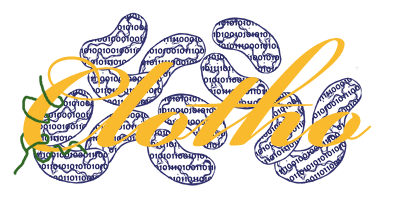Team:UC Berkeley Tools/Project
From 2008.igem.org
(→Project Abstract) |
(→Project Abstract) |
||
| Line 54: | Line 54: | ||
With >700 available parts and >2000 defined parts in the MIT Registry of Standard Biological Parts, and doubtless more parts local to the lab, synthetic biologists are now faced with the challenge of organizing, sorting, and editing these parts from an ever-growing collection of DNA. Due to this rapidly expanding collection, synthetic biology is reaching the point at which composite systems are becoming more and more prevalent. Computational tools are becoming increasingly needed to assist biologists to do the job, and it is no secret that many tools are indeed wheeling out into the community to help serve these needs. | With >700 available parts and >2000 defined parts in the MIT Registry of Standard Biological Parts, and doubtless more parts local to the lab, synthetic biologists are now faced with the challenge of organizing, sorting, and editing these parts from an ever-growing collection of DNA. Due to this rapidly expanding collection, synthetic biology is reaching the point at which composite systems are becoming more and more prevalent. Computational tools are becoming increasingly needed to assist biologists to do the job, and it is no secret that many tools are indeed wheeling out into the community to help serve these needs. | ||
| + | |||
Clotho is a toolset designed in a structural paradigm to consolidate all these tools into one working, integrated toolbox. Clotho is based on a core-and-hub system which manages multiple connections, each connection serving an independent purpose in an almost self-sufficient manner. Examples of connections include sequence viewers/editors, parts database managers, sequence alignment GUIs, and much more. Computer-savvy biologists can create new connections which will then be integrated into Clotho. In this tool-consolidation and customization it is hoped that, in the future, biologists need not look further for a program that provides the answer to their needs. | Clotho is a toolset designed in a structural paradigm to consolidate all these tools into one working, integrated toolbox. Clotho is based on a core-and-hub system which manages multiple connections, each connection serving an independent purpose in an almost self-sufficient manner. Examples of connections include sequence viewers/editors, parts database managers, sequence alignment GUIs, and much more. Computer-savvy biologists can create new connections which will then be integrated into Clotho. In this tool-consolidation and customization it is hoped that, in the future, biologists need not look further for a program that provides the answer to their needs. | ||
Revision as of 02:42, 7 August 2008
Contents |
Overall project
Clotho is based on a core-and-hub system which manages multiple connections, in which each connection serves an independent purpose in a self-sufficient manner. For instance, while one connection may be in charge of viewing/editing a sequence in an ApE-based manner, another connection may connect to databases, and will allow the user to receive and submit parts. Each connection may also perform more integrative tasks by passing data to each other through the core. If a user were working through the sequence view and database manager, for example, then the two connections could talk to each other if the user wished to edit a part in the sequence view and then resubmit the part back to the database.
Clotho's development page provides information on all current viewable connections. It is reproduced below for accessibility.
Project Abstract
With >700 available parts and >2000 defined parts in the MIT Registry of Standard Biological Parts, and doubtless more parts local to the lab, synthetic biologists are now faced with the challenge of organizing, sorting, and editing these parts from an ever-growing collection of DNA. Due to this rapidly expanding collection, synthetic biology is reaching the point at which composite systems are becoming more and more prevalent. Computational tools are becoming increasingly needed to assist biologists to do the job, and it is no secret that many tools are indeed wheeling out into the community to help serve these needs.
Clotho is a toolset designed in a structural paradigm to consolidate all these tools into one working, integrated toolbox. Clotho is based on a core-and-hub system which manages multiple connections, each connection serving an independent purpose in an almost self-sufficient manner. Examples of connections include sequence viewers/editors, parts database managers, sequence alignment GUIs, and much more. Computer-savvy biologists can create new connections which will then be integrated into Clotho. In this tool-consolidation and customization it is hoped that, in the future, biologists need not look further for a program that provides the answer to their needs.
Project Details
Overall Timeline
- iGEM 1st Meeting: June 2, 2008 - Nade and Matt start.
- Anne arrives:
- Check-up with Prof. Anderson: June 16, 2008
- iGEM picture session: July 7, 2008
- Clotho Testing Session 1: July 14, 2008
- Clotho Testing Session 2: July 16, 2008
- Clotho Alpha Release: July 26, 2008 - Download Here.
- Anne leaves (and sadness ensues): August 1, 2008
- Clotho Beta Release:
- iGEM 2008 Jamboree:
Part 1: Getting Acquainted To Clotho
Part 2: The Testing Sessions
Information and pictures regarding the testing sessions can be found here.
Part 3: The Alpha Release
Part 4: The Path Forward
Clotho Development
Clotho development information can be found here.
 "
"
